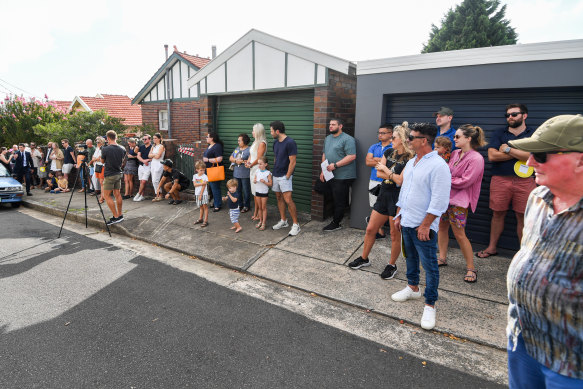A handful of Sydney’s most coveted lifestyle and premium locations recorded cheaper house rents than a year ago, new data shows.
Experts said while rental conditions remain tight, with Sydney house rents holding steady at a record $750 a week, tenants even in the top end of town were feeling the ongoing cost-of-living crisis.
There were only 20 Sydney suburbs that recorded house rent declines in the year to June, Domain data shows – bucking the trend of widespread rises – but almost all had a median weekly asking rent of $1100 or higher.
Clovelly led the way with the steepest fall of 16.2 per cent to a median asking rent of $1550 a week. That was followed by a string of suburbs in the northern beaches, the city and the east, some of the most in-demand areas at the height of the pandemic, including Palm Beach (down 11.1 per cent to $1600) and North Curl Curl (down 8.4 per cent to $1500).
There were just two suburbs that recorded unit rent declines in the same period: Katoomba ($380) and Lavender Bay ($628). They fell 2.6 per cent and 0.4 per cent respectively. This comes as the majority of tenants were forced to look for more affordable rentals, both by location and property type, which had helped lift Sydney-wide unit rents to a record median of $720.
St George chief economist Besa Deda said house rents in premium lifestyle locations had declined because tenants had reached an affordability ceiling.

Clovelly house rents have fallen over the past year.Credit: Peter Rae
“It’s possible there is an affordability stretch that has entered that market, and that would be consistent with Sydneysiders looking for more affordable suburbs and perhaps looking outside of beach suburbs that would be less expensive than those suburbs that are further out,” Deda said.
She warned that unit rents, even in affordable areas, would only grow from here as more Sydneysiders seek reprieve from the cost-of-living crisis.
“I would anticipate that the risk [for tenants] is units do show more growth than houses because units are more affordable … and you would see more of that growth in affordable areas,” she said.
“We’re still seeing conditions that are consistent with a tight rental market, even though the data is showing a bit of a loosening.”
Laing+Simmons head of property management Michael Anania said beach suburbs had recorded the steepest rental declines as they recorded the largest increases during the pandemic. Now, tenants were facing the cost-of-living crunch on all fronts.
“It’s purely based on affordability. They’ve reached their maximum, in my opinion,” Anania said.
“What we’ve found is that they move a bit lower [northern beaches], not as on-the-water. They move a bit more inland. We had three tenants recently do that. They’ve moved because they’re back in the office three days a week, the costs are a lot higher [returning to the office],” he said.
“Whereas in [the height of] COVID we had the flexibility to live where we wanted.”
Anania said many large families have also moved into units, not only to find more affordable rental accommodation but also because of less upkeep due to the demands of full-time work in a big city.
Rent Fairy founder Sarah Elkordi said suburbs that had recorded rental declines were a sign tenants had reached their limits and were no longer willing to pay for substandard homes at such exorbitant rental prices.
“It’s because the rents they are trying to achieve [are] unachievable and unrealistic,” she said.
“People are looking for quality but something they can also afford,” Elkordi added. “The prices for the quality of properties in the east is not what they’re looking for.”
She said wages had not kept up with the pace of rental growth in some of Sydney’s most sought-after pockets and were losing demand from tenants as a result.
Elkordi said in one case a tenant was no longer willing to live in Bondi because not only was her rent high, she lived in a defective building that left her rental covered in mould and caused her to become ill.
She also noted demand for one-bedroom properties was losing steam as more tenants were opting to share-house to spread their rental costs.
“The demand to be near the beach is not realistic or achievable any more … People are moving for lower prices to meet their criteria and their budget.”
Start the day with a summary of the day’s most important and interesting stories, analysis and insights. Sign up for our Morning Edition newsletter.